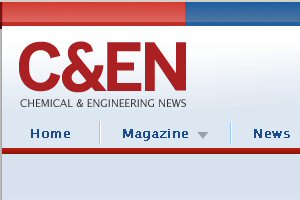Chemical & Engineering News Letter Published
June 12, 2012 – By Steven B. Krivit –
 Stephen K. Ritter, a senior correspondent with Chemical & Engineering News, published an article on low-energy nuclear reactions on May 14. He summarized some of the non-scientific events that took place during 2011. I posted a brief comment about this here.
Stephen K. Ritter, a senior correspondent with Chemical & Engineering News, published an article on low-energy nuclear reactions on May 14. He summarized some of the non-scientific events that took place during 2011. I posted a brief comment about this here.
I also submitted a letter to the editor of Chemical & Engineering News the next day. It published today, and a copy appears below.
**********************************************
Having read the article “Reviving Cold Fusion,” I must respond by saying the field has experienced significant developments, particularly with regard to terminology (C&EN, May 14, page 42).
Edmund Storms wrote the following in his 2007 book “The Science of Low Energy Nuclear Reaction: A Comprehensive Compilation of Evidence and Explanations about Cold Fusion”:
“Because many nuclear reactions besides fusion are observed, the phenomenon is now referred to as Low Energy Nuclear Reactions (LENR) or Chemically Assisted Nuclear Reactions (CANR). The entire field is now called Condensed Matter Nuclear Science (CMNS). For the sake of consistency and habit, all of these reactions are called cold fusion in this book even though this is not technically correct. As you will discover later, simple D+D fusion might not make a significant contribution.”
Storms was right that D+D fusion was not a significant part of the picture. I explained why at the 2008 meeting of the American Chemical Society in Philadelphia. The first branch of D+D fusion always produces a high flux of neutrons. In LENR, neutrons, typically observed in bursts, have been detected only occasionally. The second branch of D+D fusion always produces tritium. In LENR, tritium has been seen on numerous occasions, but only intermittently. In D+D fusion, tritium is produced at a 1:1 ratio to the neutrons. In LENR, when tritium is found, it is measured at 1 million times more than the number of observed neutrons. In D+D fusion, helium-4 is found at 10 million times less than the number of neutrons. When helium-4 is found in LENR experiments, it is found at 10 million times more than the number of neutrons.
A close study of the nuclear transmutations found in LENR shows that they are inconsistent with fusion. These phenomena are, however, consistent with weak-interaction processes.
Continued use of the “cold fusion” term perpetuates incorrect technical terminology. It also perpetuates a stigma that is appropriately placed with the scientifically unsupported idea of cold fusion but is not appropriately placed with the real science of LENR.
By Steven B. Krivit
Senior Editor, New Energy Times
Editor-in-Chief, Wiley Nuclear Energy
Encyclopedia
San Rafael, Calif

